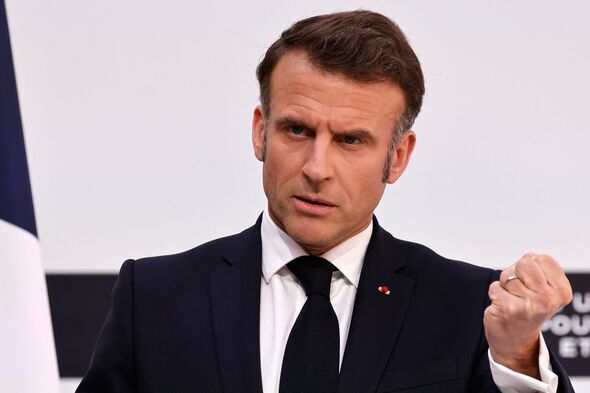On July 16, media outlets Politico and La Stampa reported that both France and Italy have chosen not to participate in a new NATO-led initiative designed to finance the delivery of American weapons to Ukraine. The move comes despite both countries being long-standing supporters of Ukraine in its war against Russia.
France Disavows the US-Led NATO Weapons Strategy
The concept was presented at a meeting between NATO Secretary General Mark Rutte and U.S. President Donald Trump on July 14 in Washington, D.C. According to officials familiar with the talks, the initiative involves NATO buying high-tech American weapons, such as air defense systems, and sending some of them directly to Ukraine. The goal is to strengthen Ukraine’s ability to protect its cities from Russian missile and drone attacks.
However, France has decided not to take part in this effort. Two unnamed French officials told Politico that the decision is linked to President Emmanuel Macron’s push to promote European defense industries. Macron has repeatedly encouraged EU member states to buy weapons made in Europe, rather than relying too heavily on foreign-made arms.
Another key reason for France’s position is financial. Politico claims that France is under economic strains due to tighter public finances and growing defense budgets. These financial challenges are affecting the country’s ability to make new defense commitments abroad.
Ukraine’s Patriot hope rides on NATO wallets — Trump enforces pay-to-arm model
Despite this decision, France has not changed its stance on supporting Ukraine. Officials said that Paris still remains committed to Ukraine’s defense but wants to do it in ways that align better with its national strategy and economic conditions.
Italy Cites Budget and System Preferences
Italy has also declined to join the new NATO-U.S. weapons funding plan, La Stampa reported. Italian government sources said that fiscal constraints and military system preferences are behind the country’s choice. Italy has invested in different technologies compared to the U.S., including the Italian-French SAMP/T air defense system, which has already been sent to Ukraine.
Officials from the Italian Defense Ministry made it clear that this is not a sign of reduced support for Ukraine. Instead, they stressed that Italy believes in exploring alternative ways to contribute, which may not involve buying weapons directly from the United States.
Although Italy has opted out of direct purchases, it is still considering other forms of assistance, such as transporting U.S.-supplied weapons to Ukraine by air, rail, or sea. Italy has reportedly told NATO that it is willing to help with logistics, but the details of how and when remain undecided.
These developments come at a time when Kyiv has been pleading for more air defense systems. As Russian attacks on Ukrainian cities intensify, securing more defensive weapons has become a top priority for Ukraine.
NATO Faces Mixed Reactions from Members
While France and Italy have stepped back from the new weapons deal, other NATO members are supporting it strongly. According to Politico, the initiative was originally proposed by Germany and Secretary General Rutte. They presented it as a way to work around President Trump’s reluctance to send direct U.S. aid to Ukraine.
Germany is playing a key role, with Chancellor Friedrich Merz confirming that Berlin is “massively” invested in the initiative. German leaders have said the plan not only supports Ukraine but also strengthens Europe’s own security and increases pressure on Russia.
Several other European nations, including the United Kingdom, the Netherlands, and Nordic countries, have agreed to take part in the arms deal. These countries have all backed the decision to fund American weapons for Ukraine through NATO.
Meanwhile, Poland has raised a new proposal. Radoslaw Sikorski, the Polish foreign minister, proposed that European taxpayers should not foot the bill for Ukraine’s armaments. He thinks that Russia’s frozen assets should be used to pay for it instead. “Who should pay for American equipment?” Sikorski asked following a meeting with EU foreign ministers. Should the aggressor use its frozen finances to pay for it, or should European taxpayers bear the financial burden?
From Promises to Paranoia—Support for Ukraine’s NATO Bid Melts Under Pressure
Despite the disagreement among NATO allies on who should pay and how to contribute, U.S. President Donald Trump confirmed on July 15 that deliveries of Patriot air defense missiles and other weapons are already underway.
This ongoing NATO effort reflects the military alliance’s continued commitment to support Ukraine, even as some member states like France and Italy choose alternative paths based on their national policies and priorities.

